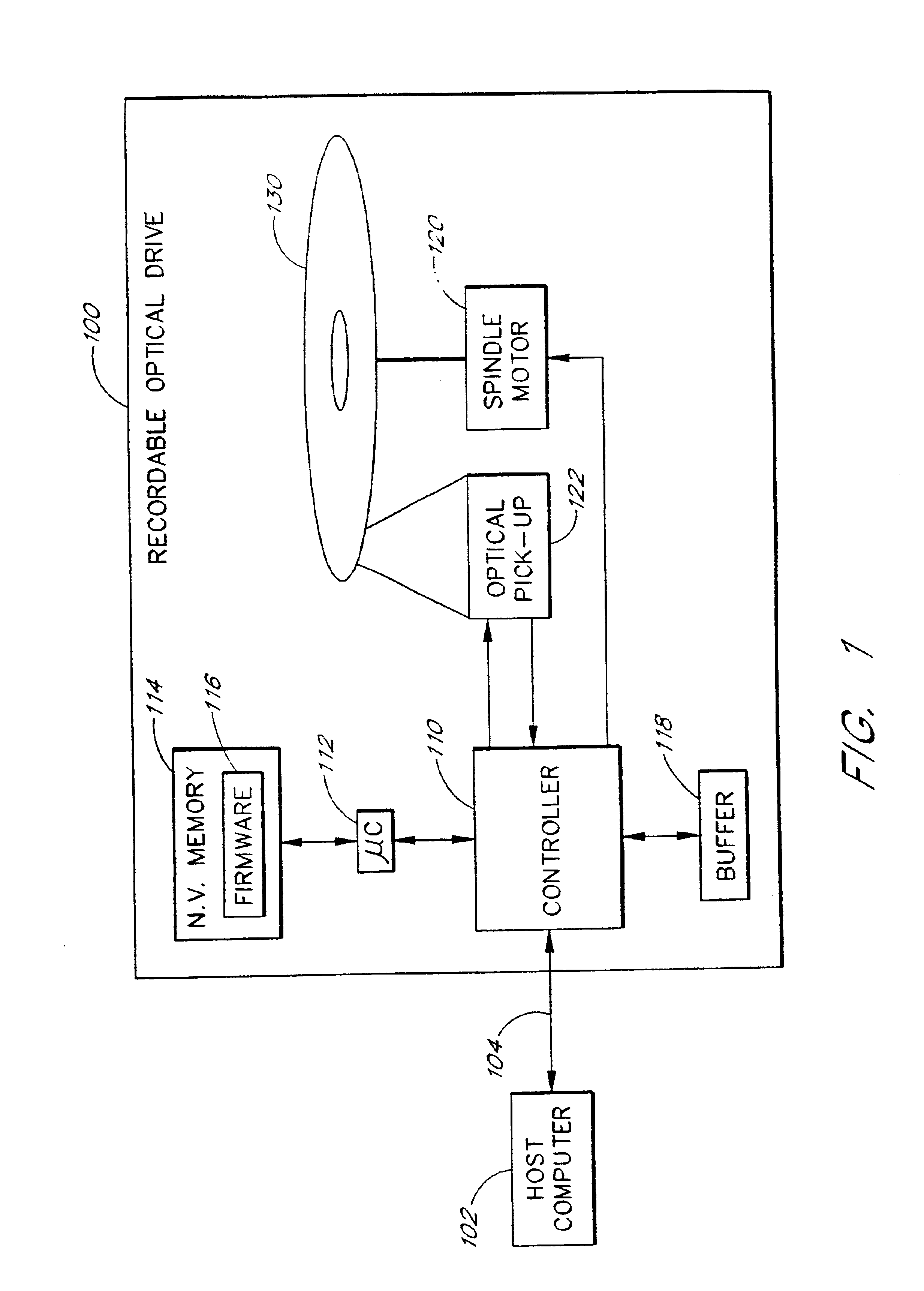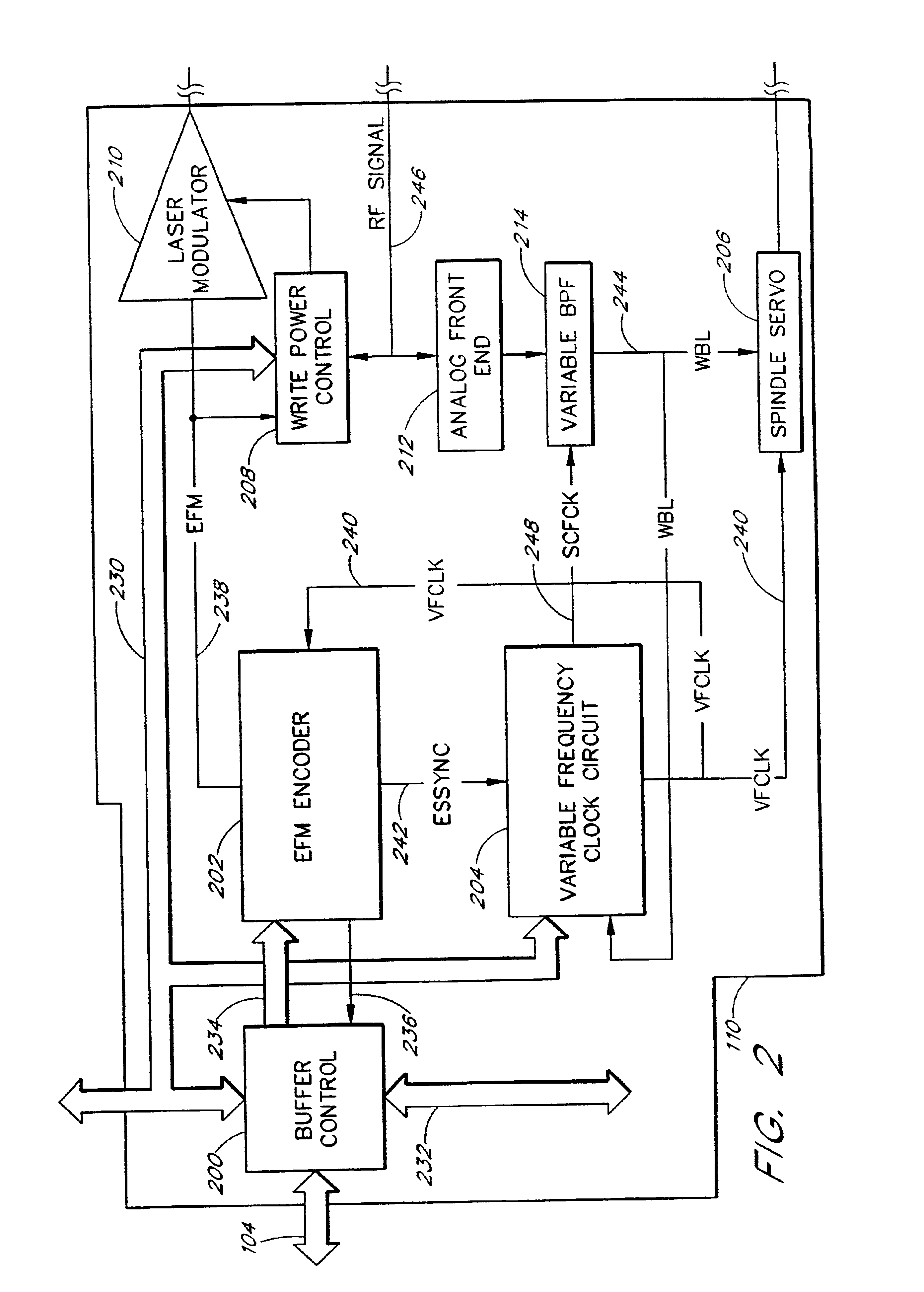Writable optical drive with dynamically variable linear velocity to prevent buffer under-run
a linear velocity, optical drive technology, applied in the direction of recording signal processing, digital signal error detection/correction, instruments, etc., can solve the problems of unrecoverable errors, affecting the data stream provided to the optical disc, and fluctuating the rate at which data is transferred from the host to the cd-rw drive, etc., to achieve fast write speed, increase data storage capacity, and slow write speed
- Summary
- Abstract
- Description
- Claims
- Application Information
AI Technical Summary
Benefits of technology
Problems solved by technology
Method used
Image
Examples
Embodiment Construction
[0046]Although this invention will be described in terms of certain preferred embodiments, other embodiments that are apparent to those of ordinary skill in the art, including embodiments which do not provide all of the benefits and features set forth herein, are also within the scope of this invention. Accordingly, the scope of the present invention is defined only by reference to the appended claims.
[0047]The present invention addresses the above problem by providing a recordable optical drive, such as a CD-RW drive, that automatically adjusts the disc rotation speed, and thus the write speed, in response to fluctuations in the transfer rate over the peripheral device bus. The adjustments to the rotation speed are preferably made based on (a) the quantity of data in the buffer (referred to as the “buffer level”), (b) the transfer rate at which data is being written to the buffer, or (c) both. In one embodiment, referred to as the “step method,” the rotation speed can be set only t...
PUM
 Login to View More
Login to View More Abstract
Description
Claims
Application Information
 Login to View More
Login to View More - R&D
- Intellectual Property
- Life Sciences
- Materials
- Tech Scout
- Unparalleled Data Quality
- Higher Quality Content
- 60% Fewer Hallucinations
Browse by: Latest US Patents, China's latest patents, Technical Efficacy Thesaurus, Application Domain, Technology Topic, Popular Technical Reports.
© 2025 PatSnap. All rights reserved.Legal|Privacy policy|Modern Slavery Act Transparency Statement|Sitemap|About US| Contact US: help@patsnap.com



